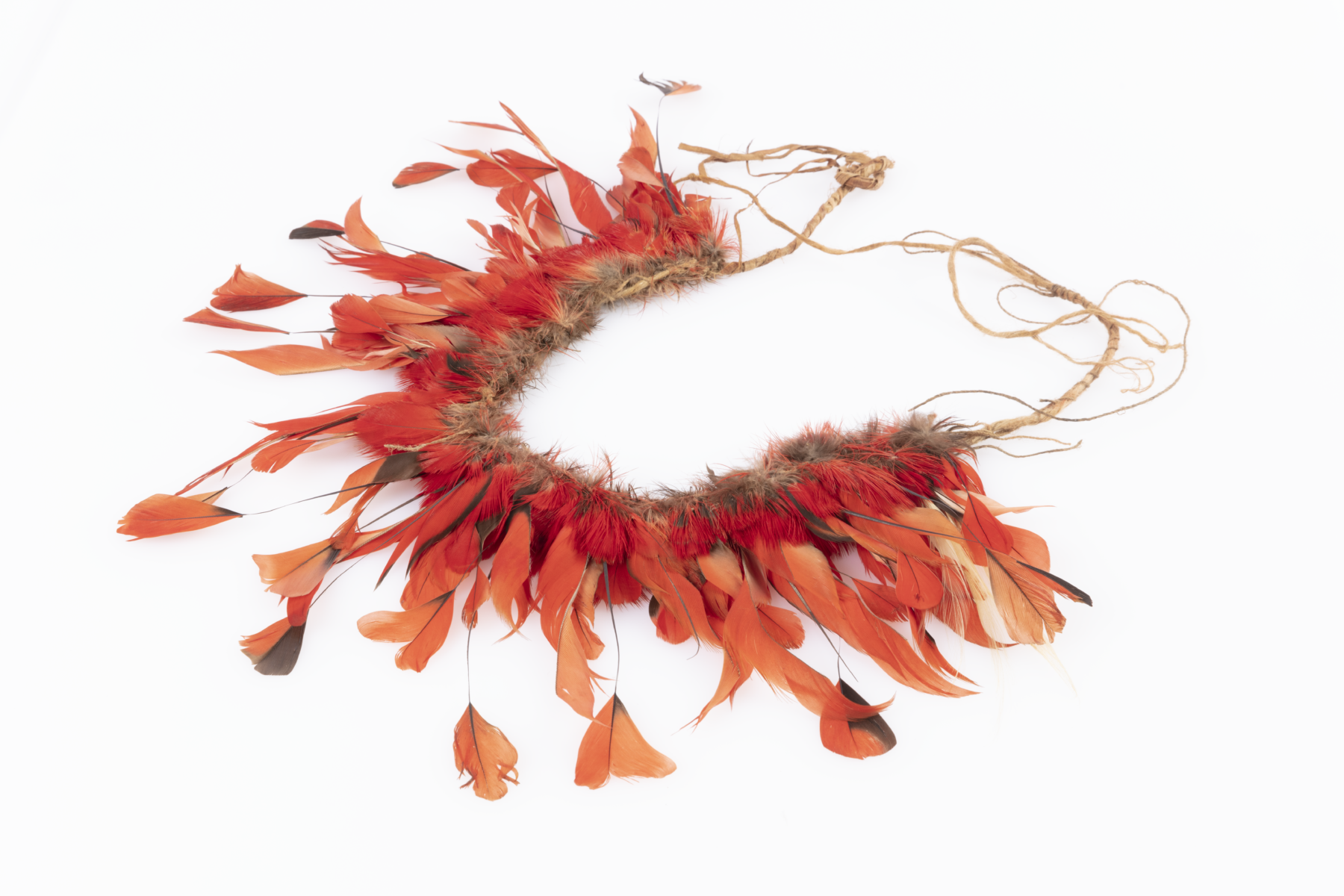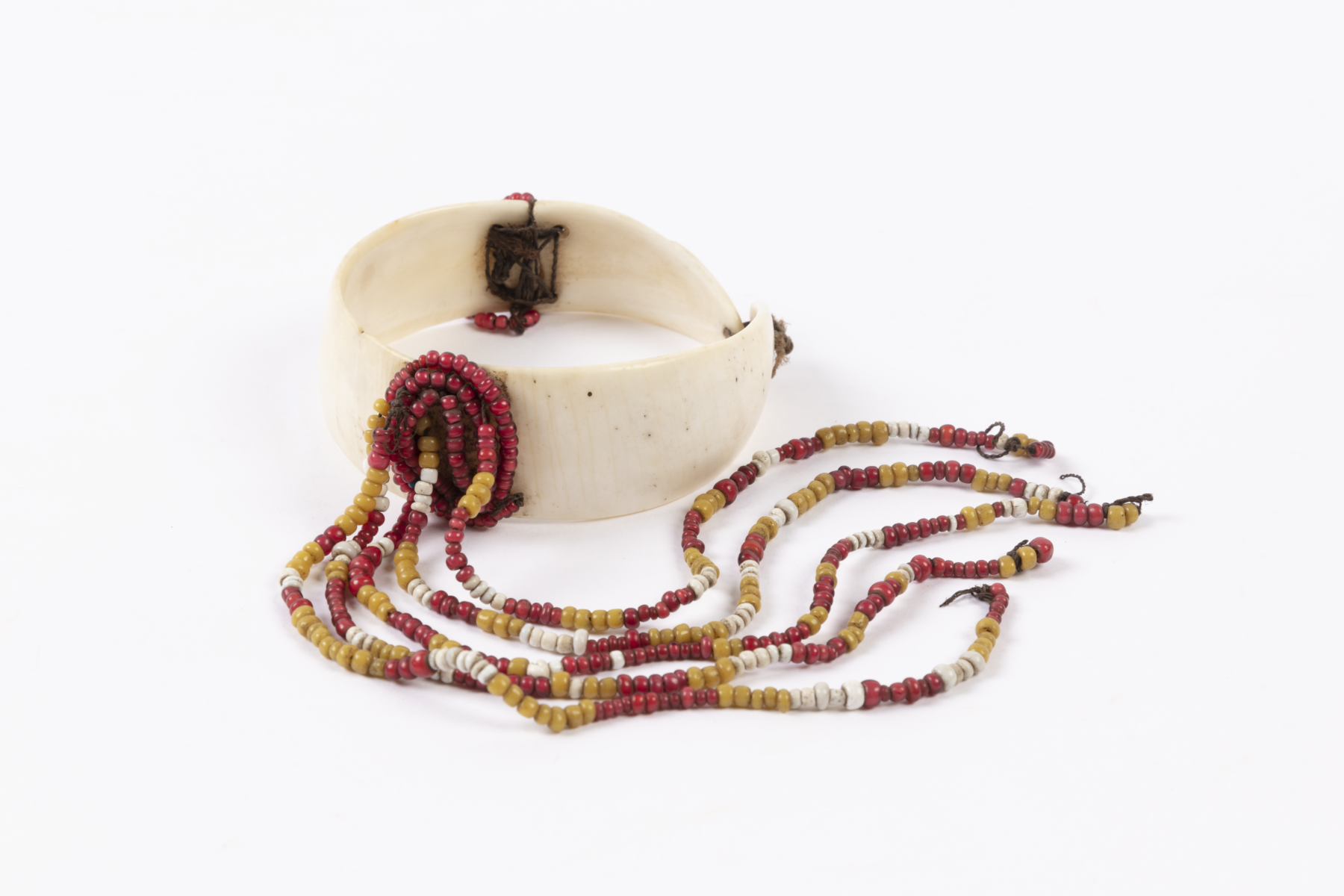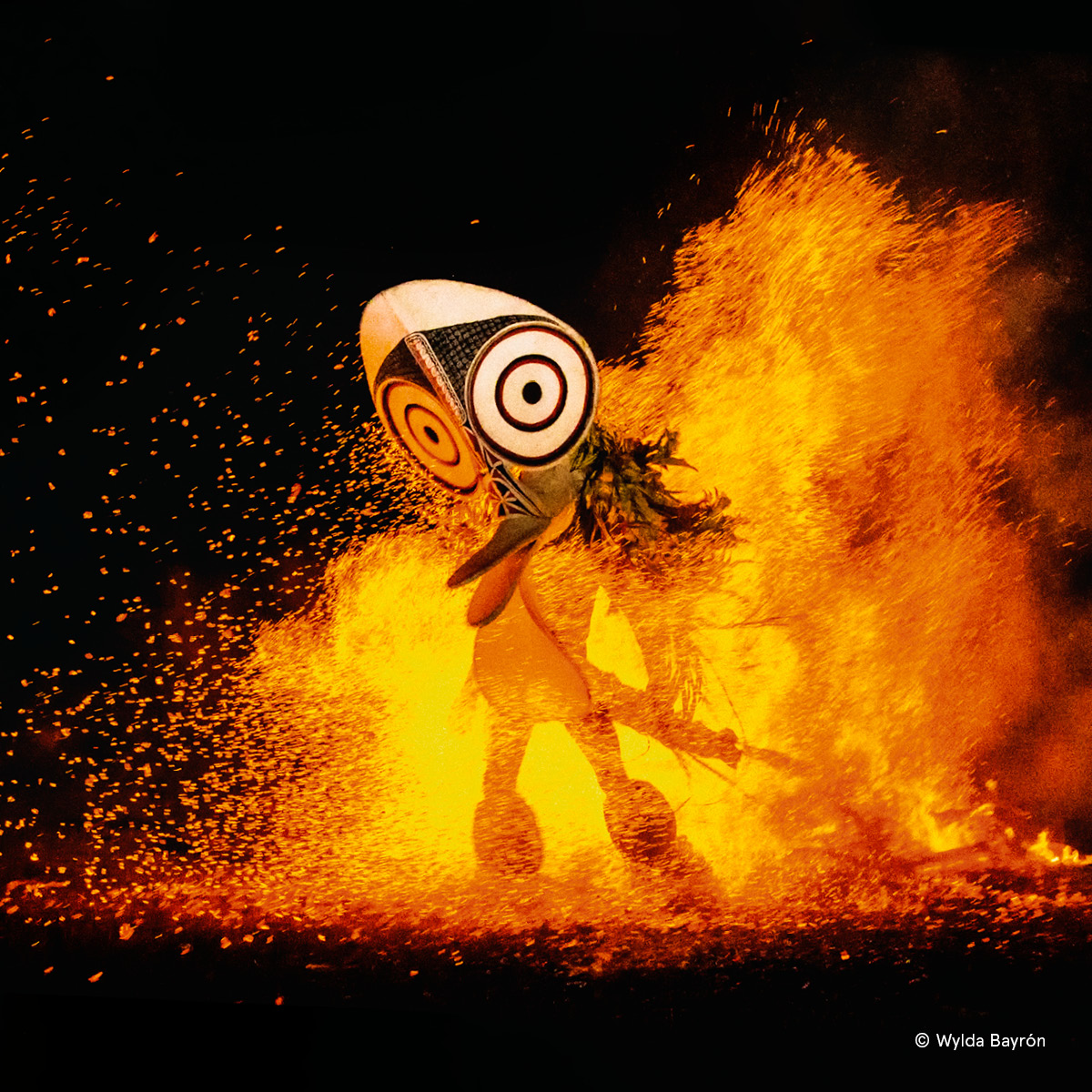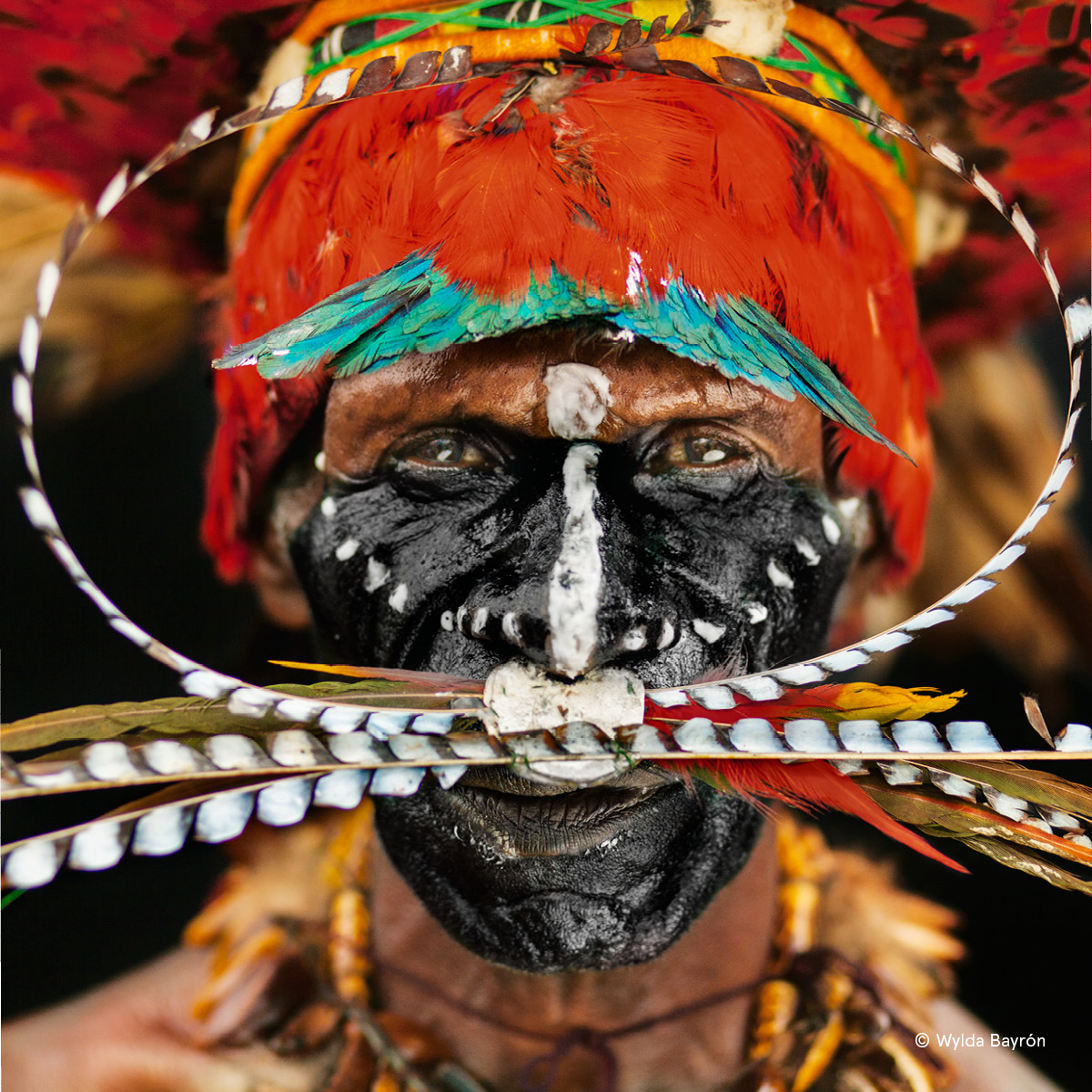The art of body adornment in Papua New Guinea

The art of wearing something as a talisman, to stand out, or show a level of status, has been around since prehistoric times. Shells, stones, feathers, bones. Metals, textiles, gemstones. Think of the ancient Egyptians, Romans and Greeks and the many beautiful pieces found on archaeological digs on historic sites and in tombs for emperors and rulers of old. The wearing of these adornments was a form of language, communication, saying this is me and this is where I am from. A perfect example of this, is Papua New Guinea.
The art of body adornment is referred to as Bilas in Papua New Guinea. From the pidgin language Tok Pisin, Bilas celebrates the connection of peoples to place and to all living things. Adornments, going back centuries, also fulfil social, spiritual and physical needs, in different ways. Made from various natural resources including shells, feathers and plant fibres, some represent power or position, while others are for cultural celebrations and ceremonies.
The Australian Museum’s newest exhibition, Bilas: Body Adornment from Papua New Guinea, showcases the beauty and diversity of body adornment and decoration from Papua New Guinea with a stunning collection of photographs by Wylda Bayrón, and objects from the world-renowned Pacific cultural collections of the Australian Museum. The exhibition will look at the many interpretations and meanings of Bilas as a culturally diverse practice, illustrating PNG people’s close relationship with their natural environment.
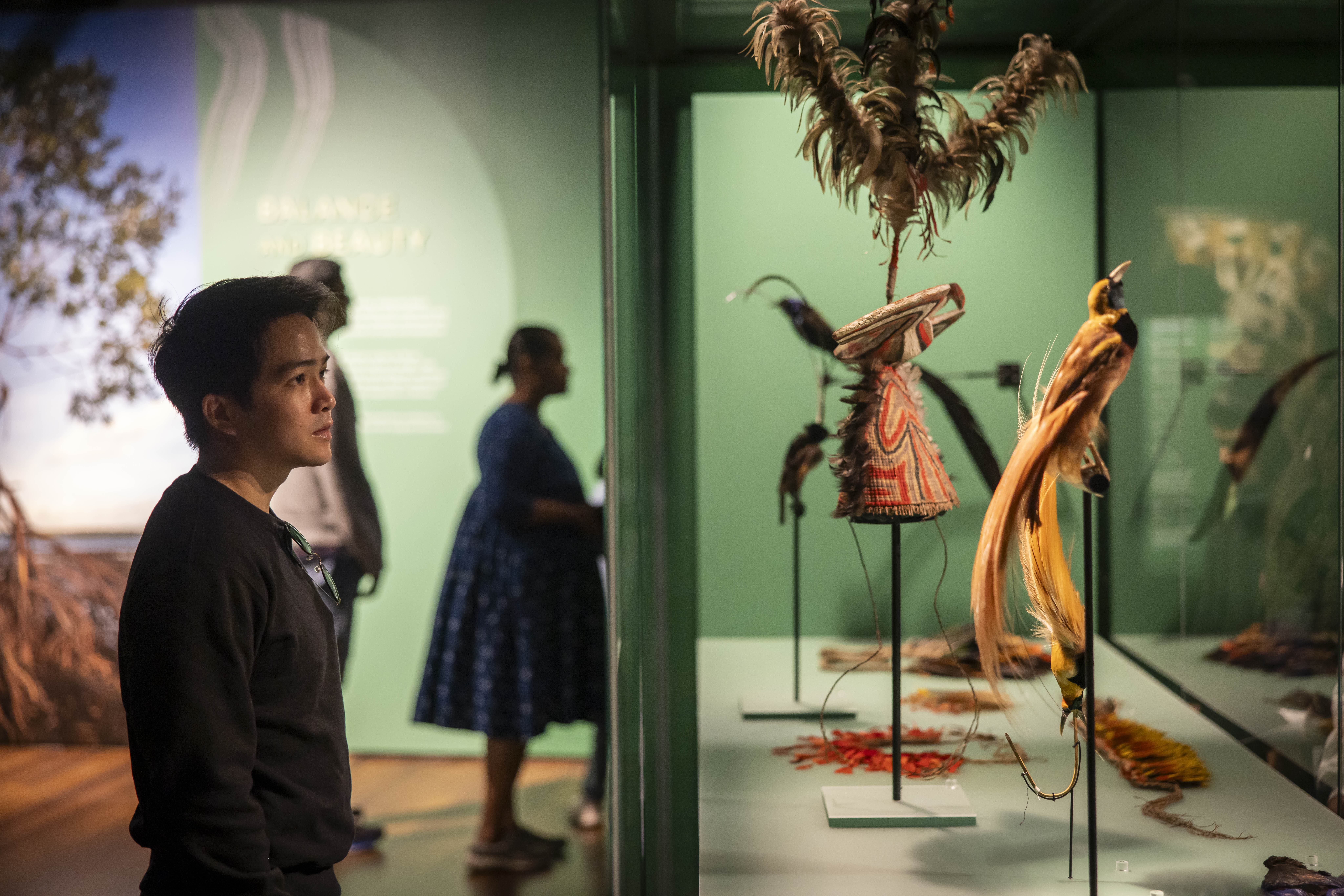
A photographer’s passion
Bilas: Body Adornment from Papua New Guinea is brought to vibrant life by 60 exquisite photographs by US-based Puerto Rican photographer, Wylda Bayrón. This multi-talented photographer is known for her work behind the cameras on TV series such as Orange is the New Black, Billions, Madam Secretary, and more recently, And Just Like That. But for Bayrón, her passion is as far from a TV set as you can get, into communities where culture and traditions remain strong. Papua New Guinea is such a place.
Bayrón has been to Papua New Guinea several times, with her first trip (in 2013) evolving from a two-month journey to an 18-month odyssey in which she wanted to photograph each of the communities from the 22 provinces. She even learned pidgin so she could communicate. Bayrón has been back several times since. The photographs that feature in this exhibition at the Australian Museum are a result of her journey into the heart of a country whose communities welcomed her and shared their culture.
“The peoples of Papua New Guinea are the curators of these images, and it is their cultures, traditions and customs that are being shared. These photographs document what I could not have when I was growing up – a photographic history of identity,” Bayrón said.
Through Bayrón’s lens, pictures really can tell a story, a story of cultural continuity, resilience, adaptation and revival.
The exhibition
Bilas: Body Adornment from Papua New Guinea allows visitors to the Australian Museum to witness the intricate beauty and diversity of cultural decoration and body adornment from the varied peoples in Papua New Guinea.
The exhibition, developed and curated by the Museum’s Pasifika team, who collaborated with local communities as well as experts from the region, features Bayrón’s arresting photographs as well as rare, never-before-displayed cultural objects from the Museum’s collection – rated as one of the most significant in the world with over 60,000 objects from across the region – natural history specimens and more than 30 pieces of newly-acquired body adornment from three cultural groups in Papua New Guinea: Koki, in the Laiagam District Enga Province; Yalu, Kagua District in the Southern Highlands Province; and Meingik, in Koinambe, Jimi District in the Jiwaka Province.
Acquired through a grant from the Australian Museum Foundation, the new pieces include the first examples of Maring / Kalam ‘Glong’ headdresses, Enga wigs (made of human hair) and Kagua district wicker helmets and body masks. It is the first time these adornments have been commissioned for an Australian institution.
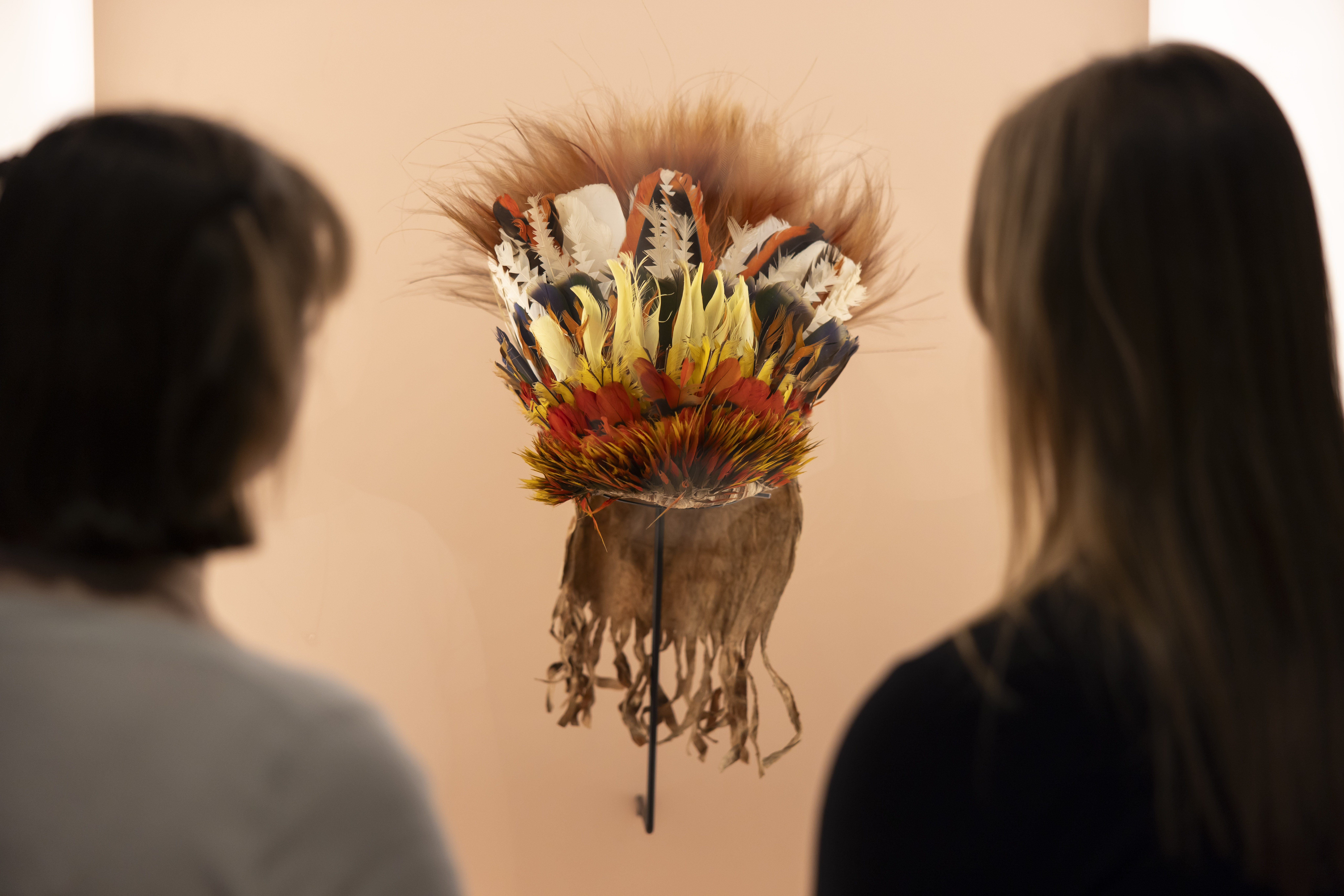
One of the co-curators of Bilas: Body Adornment from Papua New Guinea, Dr Michael Mel, a proud member of the Kilipika Village, Mt. Hagen, Western Highlands, said: “In our culture, the body has long served as a ‘canvas’ for self-expression and to convey a multitude of messages to the outside world. Beyond being a vehicle for social communication and living art, there are also spiritual domains and meanings to the body adornment,”.
There are many standout photographs from Bayrón to illustrate Bilas. In ‘Chimbu Roi’, a Chimbu tribe chief’s face is painted with charcoal and crushed seashells. Bird of paradise feathers adorn his headdress and nose piercing.
And in the image named ‘Tumbuna’, Bayrón explains: “At daybreak, this boy is going to put on the bilas for the very first time. His grandfather, the chief of the village, feared (he would) die before attending this moment, carefully unpacks the feathers, inherited from ancestors, and unrolls a small tapa (cloth in bark) that he made himself for the occasion. The child rejoices. He grasps the significance of these gestures: transmitting centuries of traditions to a new generation.”
And that, is what bilas is all about.
Through the lens
Australian Geographic also had the opportunity to speak with Wylda Bayrón, whose photos form the bases of the exhibition at the Australian Museum. We asked Wylda some questions about her passion for PNG, and its bilas.
What sparked your interest in photography?
“When I was a focus puller in 2004, I worked on a film in Singapore. I asked production to delay my return for a week as I wanted to visit Malaysia. The week turned into a year and a half travelling through Southeast Asia where I realised my passion for photography and tribal cultures.”
You have worked as a photographer/cinematographer on countless shows and movies. How do you juggle your passion for photography with the demands of film work?
“It’s a tricky balance because I love both parts of my work life and how distinct and different they are. They inform each other so in that sense it’s very rewarding. I try to work on shows that tell stories I love and think are important because each show is an all-consuming affair that can take up to six months of my life. With that money I buy my freedom to travel and invest in my passion for preservation of tribal culture. The cinematography and the photography are each a wing of a bird for me.”
What piqued your interest about Papua New Guinea?
“I’ve always had PNG in mind but the time had not come because I knew I had to go alone and I was in a relationship. I had seen pictures of the huli and a few other highland tribes and I was hooked. Little did I know I’d be spending a decade working with the people there.”
What happened on the first trip that sparked the passion for photographing and learning about the people of PNG?
“Pretty much immediately I was taken in by a family who were able to support me in my desire to capture as many tribes and Bilas as possible. My first “mum” travelled with me to some places initially and introduced me to her Motu family members and friends and that way I was able to use the wankot system to traverse and travel the entire island always having new families take me in and keep me safe. The project was born organically, fuelled by community desire for their own preservation.”
What resonates most about the peoples of PNG in your heart?
“What resonates most is that belonging to a place is not rooted in where you were born. PNG is my home and the people there are my family no matter what tribe or province they are from. Somehow, we always managed to connect and laugh and do the culture preservation work no matter where I was originally from. Once I learned the language and they knew that I understood them, the life and culture, I was one of them and they didn’t hesitate to accept me. It was always a homecoming even if it was new place. That’s pretty magical and you can’t fake that. PNG and I were written in the stars.”
What does the word bilas mean to you?
“Bilas is identity, community, ancestral knowledge and a core aspect of how we celebrate ourselves and the culture in PNG. The people and I have forged a beautiful bond. Their deep sense of identity and kindness is one of the parts that keep me coming back. It’s the immediate sense of family and community that made the journey so beautiful and I’m forever bonded with the people and the land.”
What is your favourite photo from your beautiful collection now on show at the Australian Museum as part of Bilas: Body Adornment from Papua New Guinea? What is the story behind it (the photo)?
“It’s so hard to identify a sole image as they are each representing a very special place and people. I do love my first photo shoot in the middle Sepik which yielded the image of the three men with a live crocodile around the main man. The first day we tried to shoot it rained and we had to cancel, but the men decided they would get dressed all over again the next day and then take me by canoe several hours north so that I would not miss my flight out as my visa was expiring.”
See more of Wylda Bayrón’s work at WyldaBayron.com, and follow her here @wyldabayron.
Bilas: Body Adornment from Papua New Guinea will be at the Australian Museum until 2 October, 2023 and entry is free.
Presented by the Australian Museum, this exhibition was generously supported by the Australian Museum Foundation and Supporting Partner, BSP.
Learn more here.
